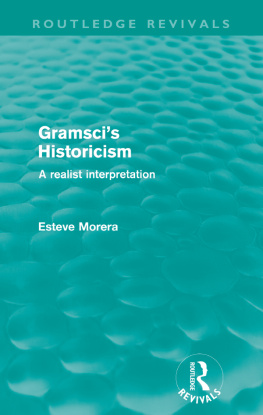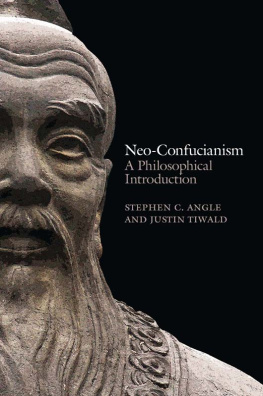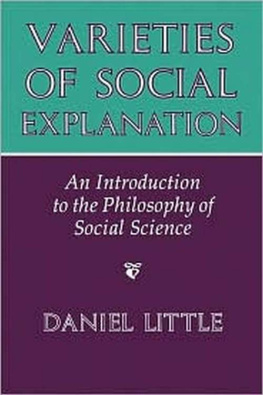First published in 1974 by George Allen & Unwin Ltd
This edition first published in 2022
by Routledge
2 Park Square, Milton Park, Abingdon, Oxon OX14 4RN
and by Routledge
605 Third Avenue, New York, NY 10158
Routledge is an imprint of the Taylor & Francis Group, an informa business
1974 George Allen & Unwin (Publishers) Ltd
All rights reserved. No part of this book may be reprinted or reproduced or utilised in any form or by any electronic, mechanical, or other means, now known or hereafter invented, including photocopying and recording, or in any information storage or retrieval system, without permission in writing from the publishers.
Trademark notice: Product or corporate names may be trademarks or registered trademarks, and are used only for identification and explanation without intent to infringe.
British Library Cataloguing in Publication Data
A catalogue record for this book is available from the British Library
ISBN: 978-1-03-207714-7 (Set)
ISBN: 978-1-00-321960-6 (Set) (ebk)
ISBN: 978-1-03-211014-1 (Volume 6) (hbk)
ISBN: 978-1-03-211026-4 (Volume 6) (pbk)
ISBN: 978-1-00-321808-1 (Volume 6) (ebk)
DOI: 10.4324/9781003218081
Publishers Note
The publisher has gone to great lengths to ensure the quality of this reprint but points out that some imperfections in the original copies may be apparent.
Disclaimer
The publisher has made every effort to trace copyright holders and would welcome correspondence from those they have been unable to trace.
First published in 1974
Third impression 1979
This book is copyright under the Berne C.Onvention. All rights arc reserved. Apart from any fair dealing for the purpose of private study, research, criticism or review, as permitted under the C.Opyright Act, 1956, no part of this publication may be reproduced, stored in a retrieval system, or transmitted, in any form or by any means, electronic, electrical, chemical, mechanical, optical, photocopying, recording or otherwise, without the prior permission of the copyright owner. Enquiries should be sent to the publishers at the undermentioned address:
GEORGE ALLEN & UNWIN LTD
40 Museum Street, London WCIA ILU
George Allen & Unwin (Publishers) Ltd, 1974
ISBN 0 04 300045 2 hardback
0 04 300046 0 paperback
Printed in Great Britain in 10 point Plantin type by
Unwin Brothers Ltd, The Gresham Press, Old Woking, Surrey
INTRODUCTION AND ACKNOWLEDGMENTS
In this book I try to deal in short compass with a large subject - the philosophy of social science. I have tried to avoid superficiality, and yet at the same time to discuss a range of issues broad enough to constitute a tolerably general introduction to the subject. Inevitably, an introductory book in philosophy is a survey of controversies. My aim has been, always, to state as clearly and to argue as persuasively as possible my own view, while at the same time putting fully before the reader opposing views and arguments. I am, however, only too well aware that many relevant issues have not been raised, and that a good deal has been taken for granted that might be challenged. This, I believe, is inevitable - in philosophy some things have to be taken for granted in order that other things can be discussed. However, the reader is entitled to a special word of explanation in relation to the first chapter, which deals with the philosophy of physical science. I have chosen to develop my theme by comparing (and contrasting) the social sciences with the physical sciences; hence I begin by setting out what I take the relevant elements of the philosophy of physical science to be. Here, though, the exposition has had to be somewhat dogmatic. There simply was no space (nor would it have been appropriate) to argue through all the controversies in the field; hence I have contented myself with expounding a more-or-less positivist account - an account which I believe would (in broad outline) be rather widely accepted, and which I believe I could defend in more detail than I have been able to do in this book.
In the pages of this book, I frequently discuss arguments put forward by particular individuals. Nevertheless, the book is not concerned with individuals as such, but with ideas. I have not been concerned to give a balanced or comprehensive account of the views or work of these individuals as a whole; rather, I have used the arguments they put forward in particular places to illustrate various themes. This does not, of course, mean that I have felt free to misrepresent individuals - on the contrary, I have striven very hard to avoid doing so; that is, to expound correctly the arguments I discuss. But I have not (indeed, could not possibly have) attempted to follow all the nuances and even inconsistencies of an individuals views throughout his entire lifes work.
There is one feature of this book that is perhaps a little unusual in a book on the philosophy of social science; namely, the amount of space devoted to a few elementary aspects of statistical method. This section may perhaps be found difficult by some, but I would ask them to persevere. Correlation and significance tests play such a large role in the practice of social science that it seemed to me essential to bring a philosophical perspective to bear on the procedures involved - something which, in my view, is all too rarely done.
As is the case with all authors, I have received much help from many people in the writing of this book. I am particularly grateful to Mary Haight, Jim Edwards, Nick Bunnin, and Steven Lukes, who read through the entire text. In addition, individual chapters and sections were read by Gerald Lessnoff, Professor S. D. Silvey, Peter Norman, Professor T. D. Campbell, Terry Greenwood, Scott Meikle, Diane Dawson and Alastair Weir. I benefited, also, from discussions with Professor A. M. Potter, Keith Burton, and Nick Fisher. From all of them I received valuable suggestions, and their advice has enabled me to correct a number of errors; for those that remain, I (like all who write acknowledgments) accept full responsibility. To Professor David Raphael, who was my first teacher in philosophy and first turned my mind towards the philosophy of social science, I owe an inestimable debt of gratitude. My grateful thanks are also due to Charlotte Logan, Sheila Hamilton and Jean Beverly, who miraculously transformed my illegible handwriting into a neat typescript.
Chapter 5 of this book is partly based on an earlier article of mine, Tunctionalism and Explanation in Social Science, which appeared in the Sociological Review, new series, vol. 17 (1969).
I dedicate this book to my parents.
Michael Lessnoff
Glasgow
September 1973
CONTENTS
Introduction and Acknowledgments
Note on Footnotes
2. Minds and Social Science
Sociological empiricism
Human action
Social action
Language
Social institutions
Unobservables and explanation
3. Regularities in Social Science
Social laws and laws of historical succession
Cross-cultural generalization
Social generalizations and their shortcomings
Ideal types
Economic theory









